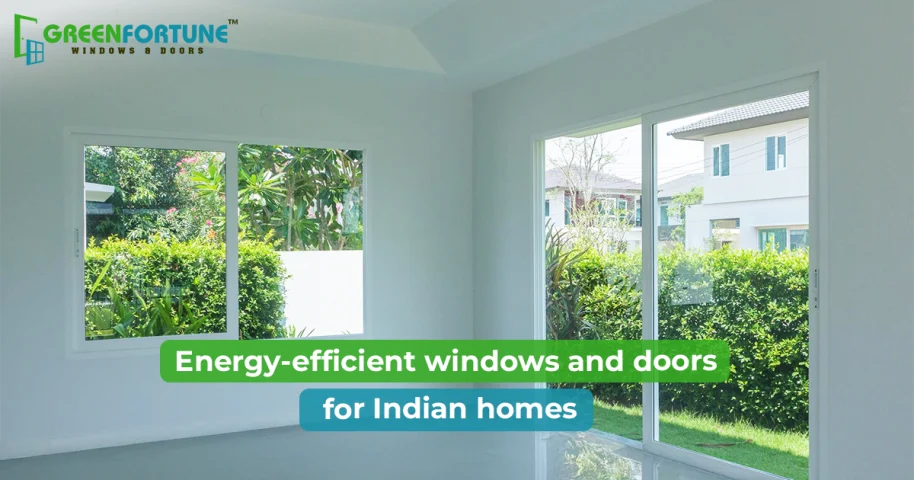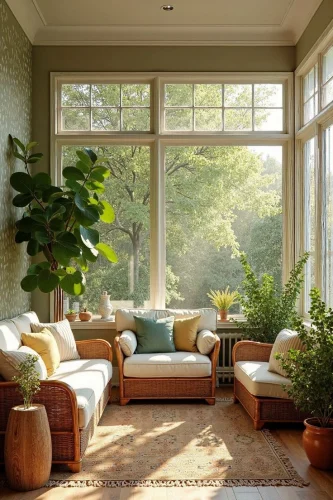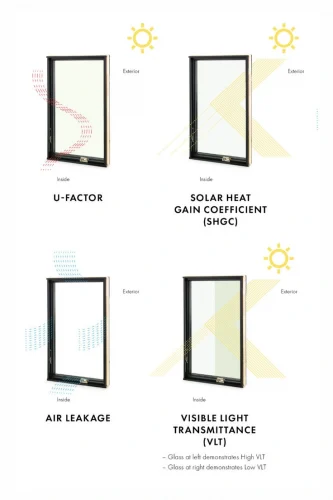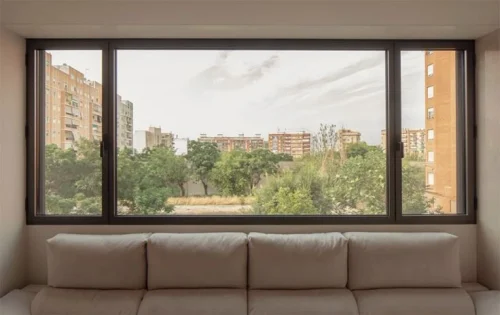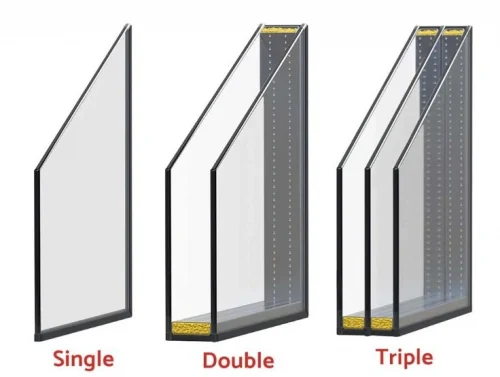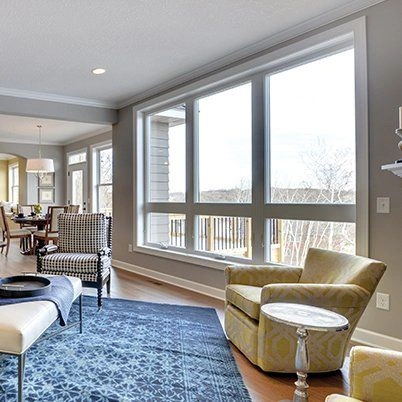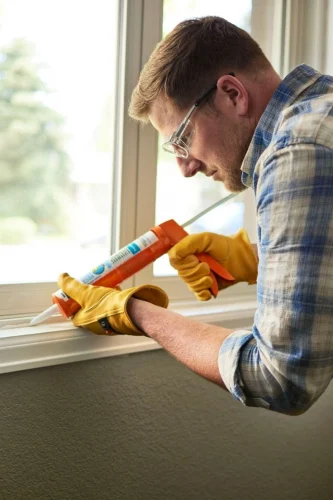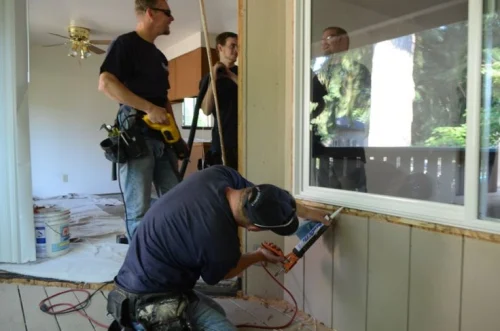
Creative Ways to Use Home Wallpaper Design for Stylish Interiors
July 4, 2025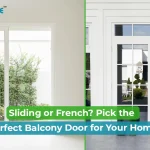
Sliding Doors vs French Doors: Which Balcony Door is Best for Your Home?
July 4, 2025If you are planning to build or renovate an eco-friendly home, then go for energy-efficient windows and doors. Have you ever felt that irritating heat entering your home through the windows or the chill breeze during winter? The best solution for this is to upgrade your home with energy-efficient windows and doors.
They are one of the smartest moves that make a huge difference in transforming a smart, comfortable, and sustainable home. Let's understand what they are, why they matter, and how to pick the best one for your home.
What are Energy-Efficient Windows and Doors?
Energy-efficient windows and doors are specially designed in such a way as to reduce the amount of heat and cold air that enters or escapes through your home. They are built using materials like insulated glass, tight-seal frames, and low-emissivity (Low-E) coatings that help control temperature changes inside your home. Unlike normal windows and doors, they act as a smart barrier and help maintain indoor comfort.
Also Read: 10 Carpet Design Tiles Ideas to Give Your Home an Amazing New Look
Benefits of Energy-Efficient Windows and Doors
You might doubt whether the energy-efficient windows and doors are really worth it or not. Their works are not directly visible as they play behind the scenes. Some of their advantages are given below.
- Lower Energy Bills: By keeping your home cool in summer and warm in winter, you can reduce the load on your AC or heater.
- Better Indoor Comfort: Helps in maintaining the indoor temperature evenly all day long.
- Reduced Carbon Emissions: cuts down on energy use and makes your home more eco-friendly.
- Less Noise from Outside: Block out traffic sounds mainly in the cities, and street noise.
- UV Protection: Reduces the amount of harmful sun rays that fade furniture and flooring.
- Moisture Control: Proper insulation prevents condensation and reduces mold.
- Low Maintenance: They are durable and resist rust, rot, or damage.
Also Read: Color Zoning Interior Design: A Smart Way to Define Spaces in Open Layouts
Tips to Choose Energy-Efficient Windows and Doors
The energy efficiency is not determined by the looks, but it is based on the performance. Some of the tips to select the right energy-efficient windows and doors are given below, which guide you in making wise decisions.
Understanding Climate
Your area’s climate plays a major role in choosing the right windows and doors. In warmer regions, opt for windows with Low-E (low-emissivity) coatings and double glazing to block excessive heat and maintain indoor coolness. In colder regions, triple-glazed windows filled with argon or krypton gas provide superior insulation that retains warmth and reduces reliance on heating systems.
Energy Efficiency Ratings
Always look for energy efficiency indicators like the U-factor and Solar Heat Gain Coefficient (SHGC). A lower U-factor refers to better insulation and less heat loss, especially in colder climates. A lower SHGC helps in limiting solar heat gain, which is perfect in hot or tropical regions. Check for Energy Star certification or Bureau of Energy Efficiency (BEE) labels, as they indicate that the windows and doors meet the energy performance standards.
Also Read: Top Main Grill Gate Design Ideas for Indian Homes: From Classic to Contemporary Looks
Frame Material
The material of the frame influences insulation, maintenance, and durability. uPVC frames are popular as they provide energy efficiency, corrosion resistance, and low maintenance. Fiberglass frames offer excellent thermal performance and are best for extreme weather conditions. Wooden frames provide good insulation and a premium aesthetic. It may require frequent treatment against moisture and pests. Aluminium frames are designed in such a way as to reduce heat conductivity and maintain strength.
Glass Type
The choice of glass impacts energy performance in a greater way. Double-glazed and triple-glazed units with Low-E coatings lower heat transfer and regulate indoor temperature. Gas-filled panes, mainly with argon or krypton, offer better thermal insulation than air-filled ones. Laminated or tinted glass options also enhance soundproofing and glare reduction. They are an excellent fit for urban or high-sunlight areas.
Window and Door Orientation
The direction and placement of your windows and doors affect energy use. South-facing sides receive the most sunlight. Therefore, solar-control glazing or shading devices are preferred. North-facing units should have more insulation, especially in colder climates. East and west-facing windows often receive low-angle sunlight, which can cause glare or overheating. Some smart strategies, like overhangs, awnings, or planting shade trees, can help regulate exposure while allowing natural light.
Air Sealing
Sealing is significant for maintaining thermal performance. Using high-quality weather stripping, gaskets, and sealing tapes around frames is essential to prevent air leakage. Even small gaps can heavily impact energy consumption by allowing conditioned air to escape and outdoor air to enter. A multi-point locking mechanism improves energy efficiency and security. Inspect seals regularly and reapply sealants to maintain optimal performance.
Also Read: Art of Baroque Interior: Easy Design Ideas for a Beautiful and Elegant Home
Proper Installation
If your windows and doors have to perform effectively, go for professional installation. Incorrect fitting can lead to water intrusion, thermal bridging, air leaks, and reduce the life of the units. It is advisable to hire experienced service providers who can guarantee proper alignment, leveling, and secure mounting. Post-installation testing, like air leak tests, can help in verifying whether it works effectively or not.
Final Thoughts
Energy-efficient windows and doors are the wise additions to make your home future-ready. Consider it as a one-time investment that provides you with the advantage of lower bills, a modern space, long-term savings, and better living. Never think of going with the trends; go for what genuinely works for your home. A little planning immediately leads to a lot more peace of mind in the future. Opt for the options that fit your lifestyle and your climate.
Also Read: Simple Tips to Keep Your Furniture Safe from Fungus On Wood in the Rainy Season
GreenFortune: Modern Living with uPVC Excellence
Step into a smarter and more comfortable home with GreenFortune’s advanced uPVC windows and doors. Our products deliver exceptional thermal insulation, noise control, and weather resistance, all without compromising on style.
GreenFortune products combine sleek aesthetics with engineering precision for a seamless fit into your lifestyle. We make every corner of your home more efficient and visually stunning.
Choose GreenFortune and experience the perfect fusion of technology.
FAQs
- Is uPVC better than wood or aluminium for energy savings?
uPVC is a better option compared to wood or aluminum as it offers low-maintenance, rust-free, and great insulation. Wood also insulates well but needs care, while modern aluminium frames can include thermal breaks to reduce heat transfer.
- What is Low-E glass, and why is it important?
Low-emissivity (Low-E) glass has a thin coating that reflects heat while allowing light to pass through. It keeps your home cooler in summer and warmer in winter.
- Do energy-efficient doors look stylish or only for utility?
Many modern energy-efficient doors come in sleek, stylish designs with various colors and finishes to match your home’s vibe without compromising on performance.
- Will energy-efficient products block too much natural light?
No. Energy-efficient windows and doors are designed to maximize daylight while minimizing heat transfer, so your rooms stay bright without getting too hot.
- Are government rebates or tax benefits available for installing them?
Some local or national schemes may offer incentives or rebates for eco-friendly home upgrades. It is worth checking with your local authorities.







